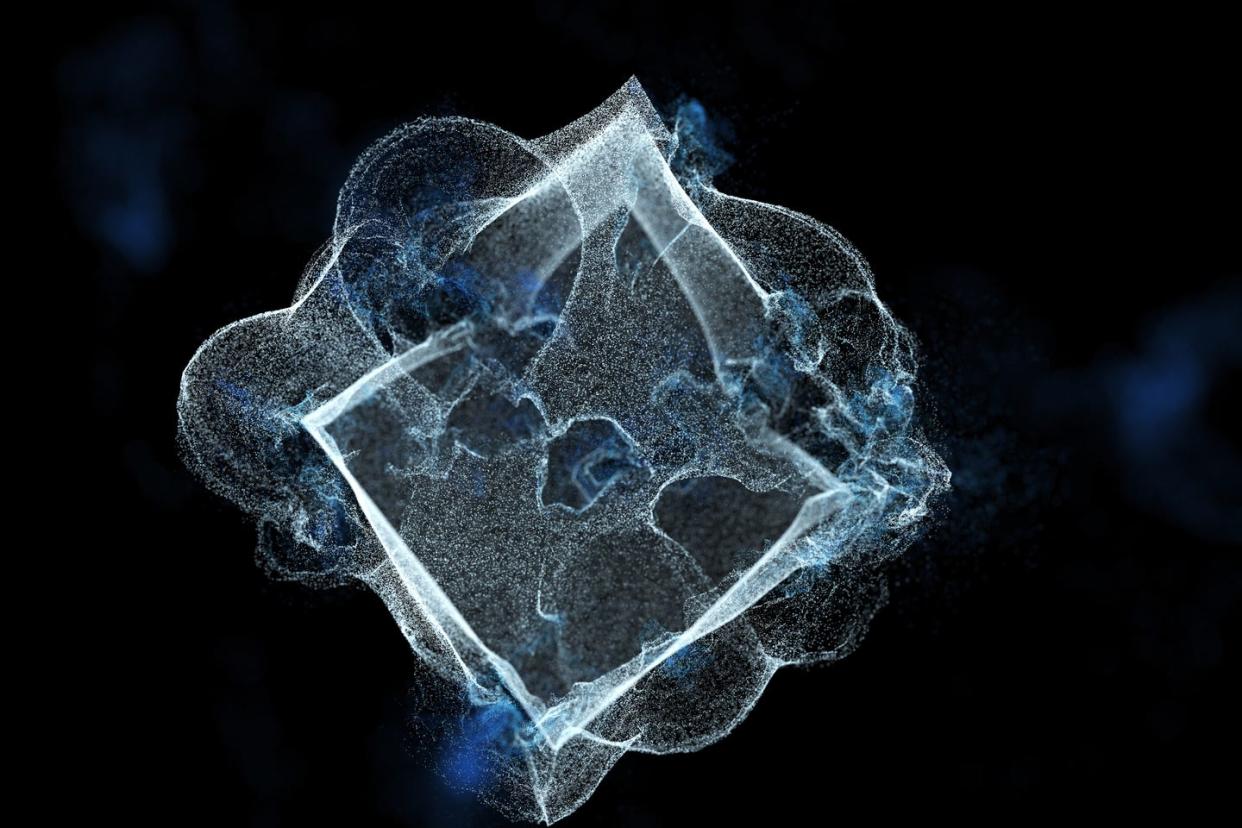A Deeply Mysterious Antihelium Particle Has Appeared in Space

In December 2016, an experiment aboard the ISS reportedly recorded antihelium particles while analyzing cosmic rays.
Although the results have yet to be confirmed, their existence would challenge our understanding of antimatter.
Now, scientists are examining ways that this detection could be possible, and suggest in a new study that “cosmic fireballs” made from dense dark matter collisions could potentially create such a result.
One of the great mysteries of the universe is why anything exists in the first place.
According to our best understanding of the Big Bang, matter and antimatter particles should’ve been created in equal measure during those first moments of existence. But when these two particles interact, they annihilate each other, leaving behind only energy. Fast forward 13.8 billion years and almost everything is made up of matter—you, me, the screen you’re reading this on, the air you’re breathing, the planet, the Milky Way, ad infinitum.
So... what gives?
In 1995, to answer this incredibly vexing question, Nobel Prize-laureate Samuel Ting proposed a project that eventually morphed into the Alpha Magnetic Spectrometer (AMS-02) instrument onboard the International Space Station (ISS). One of its core missions was to analyze incoming cosmic rays and possibly catch natural antimatter particles. In the first five years after its installation aboard the ISS, and after analyzing roughly 90 billion cosmic rays, the AMS-02 didn’t detect any sort of antimatter particle—some antiprotons and antipositrons, but not any exotic forms of antimatter.
Then, in December 2016, the AMS team announced that roughly 10 antihelium particles—consisting of two antiprotons and either one or two antineutrons, which gives you antihelium-3 or antihelium-4, respectively—were detected by AMS-02. If confirmed, this discovery would be absolutely seismic news, as these types of antimatter have only previously been created in labs (and only for a fleeting instant). To find them in a natural setting would definitely challenge assumptions found in the Standard Model.
Now, in a new study investigating ways to explain this remarkable result (if true), scientists at Canada’s Perimeter Institute for Theoretical Physics and Johns Hopkins University have turned to a concept they call “Fireball antinucleosynthesis.” Besides being a great name for a metal album, this concept describes how cosmic fireballs are created from dense dark matter collisions. This is necessary because to achieve the required bonds for the formation of antihelium-3 and -4, you’d need a sufficient amount of antiquarks (the base units of antimatter) to be slowly moving and densely packed. The results were published in late June in the journal Physical Review D.
“A fireball is a dense, energetic region of space containing large numbers of antiparticles,” study co-author Anubhav Mathur told Live Science. “Once formed, it expands at close to the speed of light, releasing antiprotons, antineutrons, and antihelium into the surrounding environment. The antinuclei subsequently travel outward, and some of them reach the Earth where they can be detected.”
Another strange piece of this antimatter puzzle is the proliferation of antihelium-4—a particle that, according to the Standard Model of Physics, should only be created in one out of everything 10,000 antihelium-3 particles. However, the AMS-02 candidates appear to suggest something closer to “about one antihelium-4 event for every two to three antihelium-3 events,” co-author Michael Fedderke told Live Science. When Fedderke and his team modeled possible cosmic fireball collisions, they found that large, dense formations could explain this perplexing ratio.
For now, all of these findings are preliminary. As is a common refrain with anything involving dark matter, more data is needed to confirm the existence of either these antihelium particles—the AMS team is still analyzing them—or these cosmic fireballs, which have never been observed.
Luckily, the AMS-02 experiment will continue its work aboard the ISS while more terrestrial projects (such as the General AntiParticle Spectrometer (GAPS) experiment happening in Antarctic later this year) will search for similar, existence-defining evidence.
You Might Also Like
